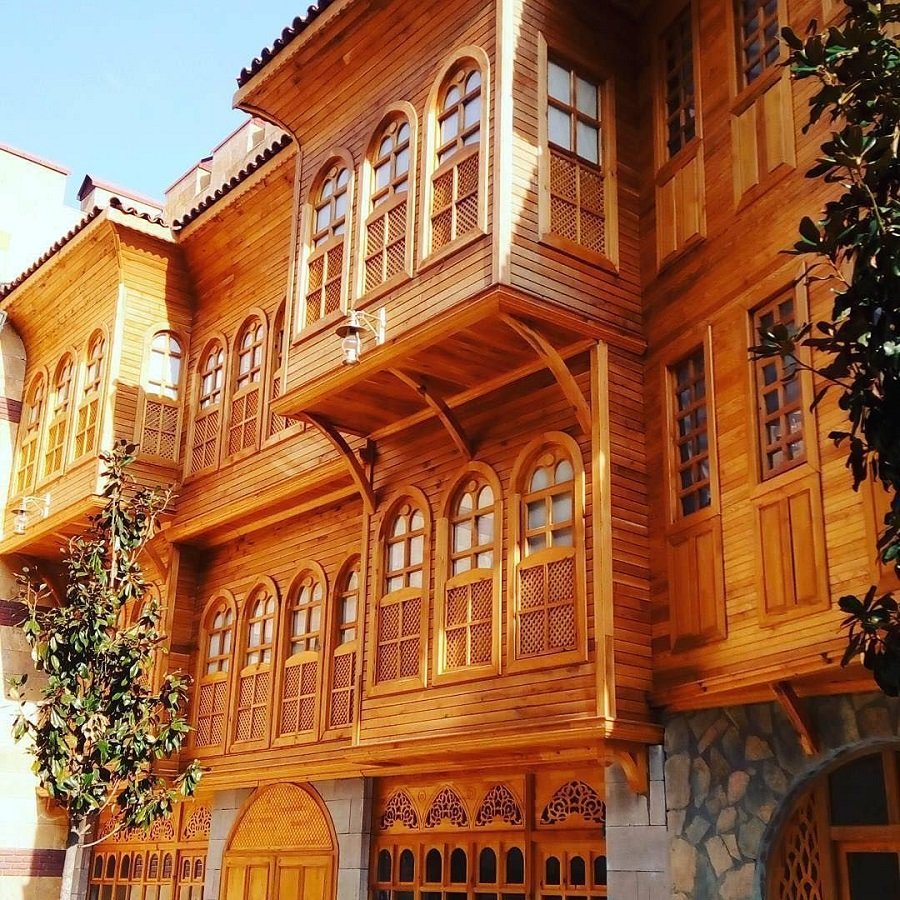
Before us stands a magnificent example of traditional wooden architecture in the Ottoman style — a historic mansion known as a "konak". The facade of the building represents a true work of art, completely crafted from natural wood in a warm honey-golden hue. The mansion features a characteristic multi-level structure with projecting elements on the upper floors, creating an interesting visual effect and functional overhangs.
The facade is richly adorned with arched windows with meticulously crafted frames, giving the structure lightness and elegance despite its substantial size. Particularly noteworthy are the wooden lattice screens (mashrabiya) on the lower parts of the windows — a traditional element of Eastern architecture that not only serves decorative purposes but also provides privacy and sun protection while not impeding air circulation.
The lower floor of the building has a stone foundation, which creates a solid base and contrasts with the wooden finish of the upper floors. The arched doors and decorative carved elements in the lower part of the facade demonstrate exceptional craftsmanship.
When designing the facade of a modern house, several techniques can be borrowed from this traditional architecture: the use of natural materials, creating projecting elements for visual interest and functionality, applying carved details to add individuality, as well as thoughtful placement of windows with decorative elements to control natural lighting.